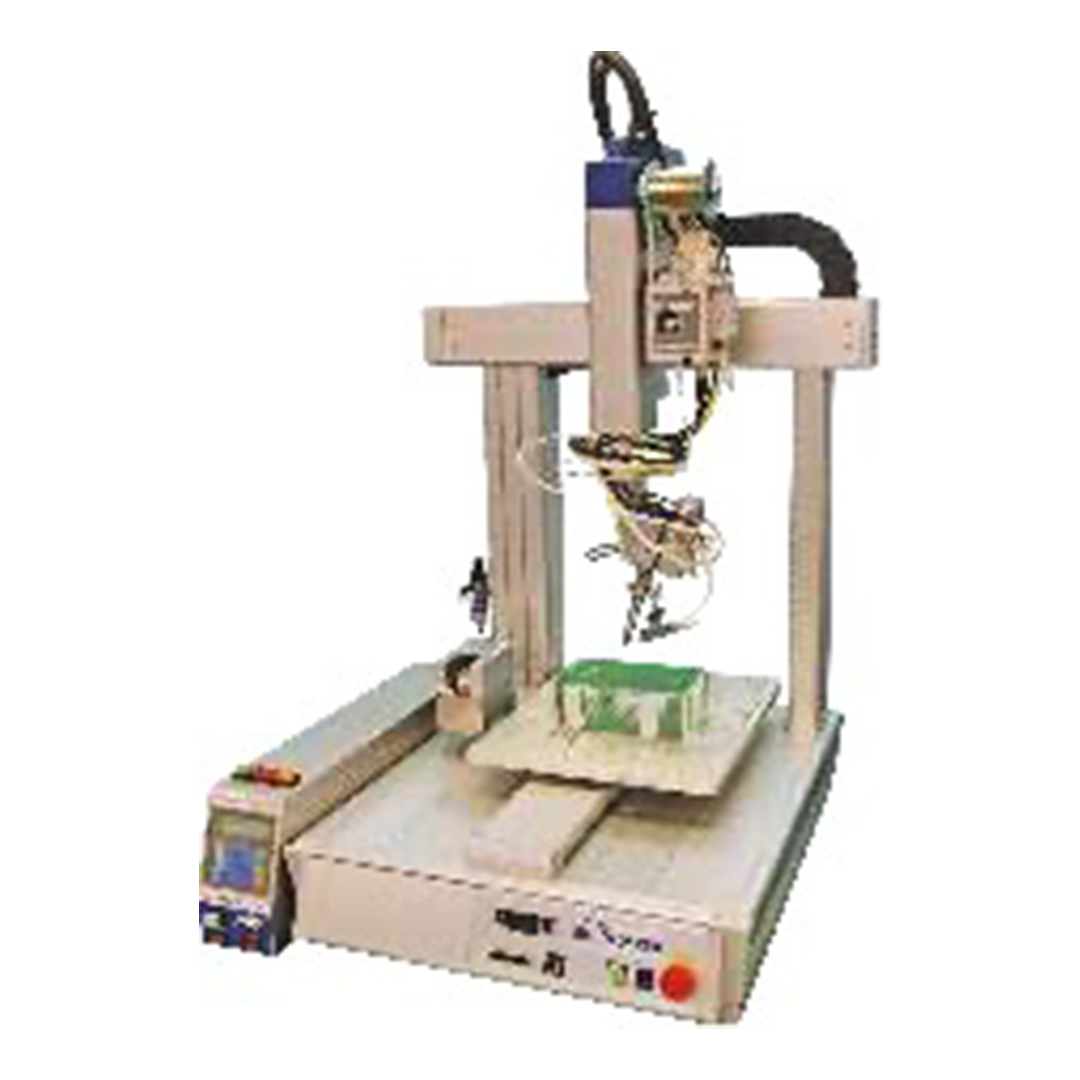
In today’s fast-paced electronics manufacturing industry, precision and efficiency are paramount. The robotic soldering machine has emerged as a game-changer, offering unparalleled accuracy and consistency in soldering tasks. As electronic components become smaller and more intricate, traditional soldering methods struggle to keep up with the demand for precision. Automated soldering not only meets these requirements but also ensures reliability, reducing human error and enhancing overall production quality. Sumitron, a leading provider of industrial solutions, offers a range of Tsutsumi soldering robots designed to meet diverse manufacturing needs, helping businesses stay ahead in a highly competitive market.
The Evolution of Soldering: From Manual to Robotic
Traditional manual soldering is labor-intensive and prone to human error, leading to inconsistencies and potential defects. It requires skilled technicians to achieve consistent results, but even experienced workers can struggle with precision and uniformity, particularly in high-volume production environments. The introduction of robotic soldering machines addresses these challenges by automating the process, ensuring uniformity, and reducing the probability of defects. By integrating advanced control systems, robotic soldering enables seamless repeatability and precision, reducing rework rates and enhancing production efficiency. This automation not only improves product quality but also significantly boosts operational output, allowing manufacturers to scale production while maintaining high standards.
The Power of Precision: Advantages of Robotic Soldering Machines
In the world of manufacturing, precision and efficiency are key to producing high-quality products. Traditional soldering methods can be time-consuming, prone to errors, and even hazardous to workers. Robotic soldering machines have revolutionized the industry, offering numerous benefits that transform the production process.
Here are the advantages of robotic soldering machines:
- Unmatched Precision: Programmed for perfection, robotic soldering machines apply exact amounts of solder with pinpoint accuracy, ensuring uniformity and minimizing defects.
- Productivity Boost: Automation accelerates the soldering process, enabling continuous operation without errors or delays, and increasing production to meet tight deadlines.
- Cost-Effective: By reducing manual labor and errors, a robotic soldering machine generates significant cost savings, with a rapid return on investment through improved efficiency and reduced waste.
- Safer Work Environment: Automating soldering reduces workers’ exposure to high temperatures and hazardous fumes, promoting a safer and healthier workplace.
- Scalability and Flexibility: Robotic soldering machines can be easily integrated into existing production lines, and their programming can be adjusted to accommodate various product designs and production volumes, making them an ideal solution for manufacturers with diverse product portfolios.
Sumitron’s Tsutsumi Soldering Robots: A Closer Look
Sumitron offers a variety of Tsutsumi soldering robots, each tailored to specific manufacturing requirements:
1. Tsutsumi TX-m334A Soldering Robot
- Compact Design: Features a compact footprint, making it suitable for limited workspace environments.
- High Precision: Equipped with a high-precision ball screw and servo-controlled motor, ensuring accurate and consistent soldering operations.
- Versatile Applications: Ideal for both point and slide soldering tasks, flexible for various production needs.
2. Tsutsumi Icross TX-i224 Soldering Robot
- Robust Construction: Built with a sturdy aluminum base, providing high rigidity and durability.
- Advanced Control System: Utilizes a high-precision ball screw and servo control motor for enhanced repetition accuracy and payload capabilities.
- User-Friendly Interface: Designed for ease of use, allowing operators to program and monitor the soldering process efficiently.
3. Tsutsumi MINIMAX II TX-851 Soldering Robot
- High Precision: Each axis enables highly precise operation through the use of ball screws, with low-speed movement realizing 0.1 mm/s.
- Stability in Slide Soldering: The precision leads to the stability of slide soldering and also reduces tact time.
- Modular Design: The tool mechanism part and controller part are separable, allowing for easy changes between in-line and cell production setups.
4. Tsutsumi AUTOMATIC SOLDERING UNITS TI 652 & 632
- Efficient Soldering: Designed for high-speed, high-precision soldering applications.
- Stable Performance: Advanced heating technology ensures uniform soldering results.
- Flexible Compatibility: Works well with various soldering requirements, including lead-free applications.
5. Tsutsumi Feeding Unit TF 621 For Soldering Robot
- Reliable Solder Feeding: Ensures smooth and consistent solder supply to robotic systems.
- Adjustable Settings: Allows for customization based on specific soldering needs.
- Durable Design: Built for long-term performance in industrial environments.
6. Tsutsumi IMPACIII TS-711 Controller
- Advanced Control System: Provides precise command execution for soldering operations.
- User-Friendly Programming: Simple interface for setting up and modifying soldering processes.
- Seamless Integration: Compatible with multiple Tsutsumi soldering robots, optimizing workflow efficiency.
Addressing Common Pain Points in Manufacturing
Manufacturers often face challenges such as inconsistent soldering quality, high labor costs, and production bottlenecks. Implementing robotic soldering machines like those offered by Sumitron can alleviate these issues by providing consistent quality, reducing reliance on manual labor, and streamlining the production process.
Conclusion
The integration of a robotic soldering machine into manufacturing processes represents a significant advancement in electronics production. Sumitron’s range of Tsutsumi soldering robots offers tailored solutions to meet various industrial needs, ensuring precision, efficiency, and reliability. By embracing this technology, manufacturers can enhance product quality, increase productivity, and maintain a competitive edge in the market.
For more information on robotic soldering solutions, visit Sumitron’s Tsutsumi Soldering Robot product page.
Read Also This Blog


